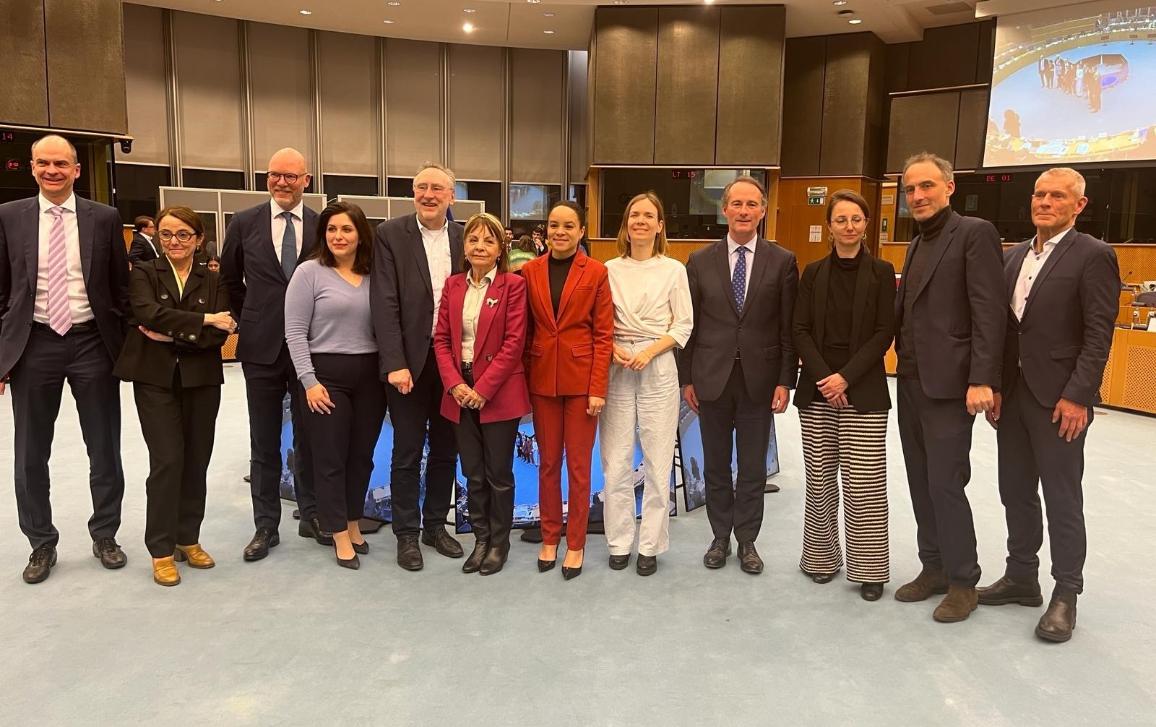Yesterday the European Parliament adopted, with a broad majority, the long awaited Regulation on Prohibiting Products made with Forced Labour (the Forced Labour Regulation (FLR)). ESMC expects that this new European new law will have a significant positive impact on the solar industry, as it mandates the banning of all products made with forced labour from the European market. It is well known that a substantial portion of the materials used in solar panels originate from the Xinjiang province in China, where state-imposed forced labour is prevalent. The province accounts for about one-third of the world’s polysilicon production. This polysilicon is used in Chinese-made solar panels, including most of those exported to Europe. For this reason, the 2023 Global Slavery Index states that solar panels represent the fourth highest at-risk good for forced labour that is imported by the G20.
The FLR originates from a proposal from the European Commission, September 2022 and have after that been negotiated in the European Parliament and among the EU 27 member states. The regulation will establish a framework to investigate and prevent the use of forced labour in the supply chains of companies. If the use of forced labour is proven, all import and export of the related goods would be stopped at the EU borders. Yesterday the forced labour regulation was adopted with 555 votes in favour, 6 votes against and 45 abstentions. The regulation requires a final formal approval from the EU Council, which is expected to happen shortly and should only be a formality. After that the legislation is finally completed and after three years from that time it will be fully implemented in all EU member states.
Below, our Sustainability Policy Director Jens Holm highlights some of the pros and cons of this new legislation.
+
- An agreement, finally, that covers all products, components and from all countries. Article 3 in the FLR says: “Economic operators shall not place or make available on the Union market products that are made with forced labour, nor shall they export such products.”
- The adopted version gives the European Commission a stronger role as it will be mandated to carry out all investigations outside EU territory. Member states “competent authorities” will only investigate inside EU. For that reason the European Commission has asked for adequate funding to carry out it’s new mandate.
- Extra consideration given to products from regions or sectors where there is reliable and verifiable evidence that there exists forced labour imposed by state authorities (e.g. Xinjiang).
- For those risk areas and products, a database will be set up, administered by the European Commission. The database should facilitate and speed up the processes of banning risk products or groups of products. The ESMC expects that materials such as metallurgical-grade silicon and polysilicon from the Xinjiang province will be registered in the database, and thus identified as products associated with forced labour. The database will be made public within 18 months from adoption of the FLR, i.e. 18 months before the legislation itself is set in motion.
- Extra support, in particular, to industry small and medium sized enterprises through a “Forced Labour Single Portal”. There will also be guidelines and other information to industry on how to comply with the FLR.
- Extra focus on international cooperation, also with third countries “with similar legislation”. That should include the United States, and it’s Uyghur Forced Labour Prevention Act, which virtually bans all products from the Xinjiang province.
- No reference to “multi-stakeholder initiatives” at all, meaning that commercial ESG schemes or similar could not replace legislation.
–
- It will take 36 months for the regulation to be applicable as European law, meaning as from April/May 2027.
- No reversed burden of proof principle. It will be up to the member states and the European Commission to prove that a product is made with forced labour. In some regions, such as China, it can be difficult to prove the forced labour exposure. That’s why ESMC underlines the importance of the database. If areas/products are registered in the database they are associated with forced labour, thus should be banned from the EU market.
- No remediation to victims (there is a short reference to a guidance on remediation, but no clear obligation for economic operators or states).
- A new paragraph – recital 48 – regarding supply chain of “critical importance” for the EU (could be solar PV materials). It goes:
“Nevertheless, particular attention should be paid to preventing disruptions of supply chains of strategic or critical importance for the Union and, in this regard, to products whose disposal would alter the proper functioning of the internal market and of such supply chains. In those cases, by way of exception from the obligation to impose an order to have the product concerned disposed of, the lead competent authority should, where appropriate, be able to order the product concerned to be withheld for a defined period, at the cost of the economic operators.” [our underline]
This might in some cases delay the prohibition of certain products, but the essential structure of banning products made with FL is still there. This is by no means an exemption clause.
Timeline, implementation of Forced Labour Regulation
- 12 months for designation of member states’ competent authorities
- 18 months making database public
- 36 months entry into force of regulation
- The regulation will be reviewed every 5 years.
The above timeline is as from the date of publication in the EU Official Journal (that will happen after the final and formal adoption of the EU Council, which should happen soon).
The image shows the negotiating team at the last trilogue on the Forced Labour proposal © European Union (2024)

Jens Holm
ESMC Policy Director
For more information:
holm@esmc.solar
+4670 825 0889
